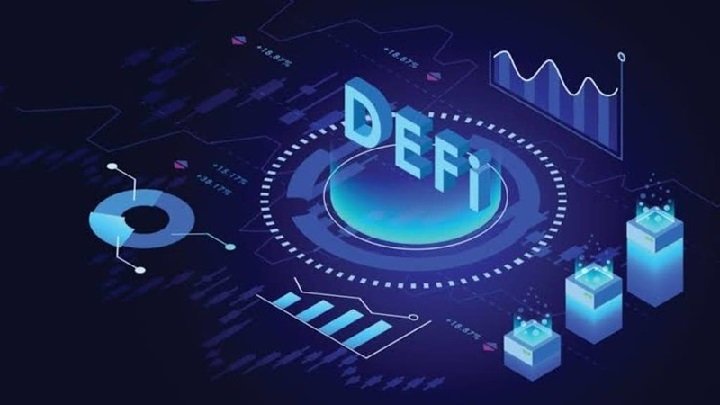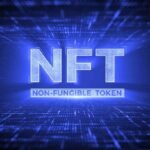In the rapidly evolving world of decentralized finance (DeFi), one concept that has been gaining traction is Prediction DeFi. This innovative approach to prediction markets leverages blockchain technology to create more transparent, secure, and accessible platforms for forecasting various outcomes. In this article, we will explore what Prediction DeFi is, how it works, its advantages and challenges, and its potential impact on the future of finance.
Understanding Prediction DeFi
Prediction DeFi refers to the integration of decentralized finance principles into prediction markets. A prediction market is a platform where participants can trade contracts based on the outcome of future events. Traditionally, these markets have been centralized, and controlled by a single entity. However, Prediction DeFi aims to decentralize this process, offering a more open and democratized system.
In a Prediction DeFi system, the prediction market operates on a blockchain, utilizing smart contracts to automate and enforce the rules of the market. This decentralized approach ensures that no single party has control over the market, reducing the risk of manipulation and increasing transparency.
How Prediction DeFi Works
To understand Prediction DeFi, it’s essential to grasp the mechanics of prediction markets. Here’s a step-by-step overview of how these markets operate in a decentralized context:
- Event Creation: Users or entities create prediction markets by defining an event they want to forecast. This could range from political elections to financial market movements.
- Market Participation: Participants buy and sell shares or contracts related to the outcome of the event. For example, in a market predicting an election result, participants might buy shares in different candidates.
- Smart Contracts: The underlying smart contracts on the blockchain manage the market’s operations. These contracts automatically execute trades, settle outcomes, and distribute winnings based on predefined rules.
- Outcome Resolution: Once the event occurs, the outcome is reported, often through an oracle or a decentralized source of truth. The smart contracts then execute the payouts based on the outcome.
- Transparency and Security: Because Prediction -DeFi operates on a blockchain, all transactions and market activities are recorded on a public ledger. This transparency ensures that participants can verify the fairness of the market and the accuracy of the outcomes.
Benefits of Prediction DeFi
Prediction DeFi offers several advantages over traditional prediction markets:
- Transparency: All transactions and market activities are recorded on a blockchain, making it easy for participants to verify the integrity of the market.
- Security: By utilizing smart contracts, Prediction -DeFi platforms can reduce the risk of fraud and manipulation. The decentralized nature of the blockchain also enhances security by eliminating single points of failure.
- Accessibility: Decentralized prediction markets can be accessed by anyone with an internet connection, making it easier for people from different regions to participate in global forecasting.
- Reduced Costs: Traditional prediction markets often involve intermediaries and administrative fees. In contrast, Prediction -DeFi platforms can operate with lower costs due to the automation provided by smart contracts.
- Innovation: The integration of DeFi principles into prediction markets opens up new possibilities for innovative financial products and services.
Challenges and Risks of Prediction DeFi
Despite its benefits, Prediction -DeFi also faces several challenges and risks:
- Regulatory Uncertainty: The regulatory landscape for decentralized prediction markets is still evolving. Unclear or restrictive regulations could impact the development and adoption of Prediction DeFi platforms.
- Smart Contract Risks: While smart contracts offer automation and efficiency, they are not immune to bugs or vulnerabilities. Flaws in the code could lead to unintended consequences or losses.
- Liquidity Issues: Decentralized prediction markets may struggle with liquidity, particularly in niche markets or early-stage platforms. Limited liquidity can affect the accuracy and reliability of predictions.
- Oracle Dependency: The accuracy of prediction markets relies on the data provided by oracles. If an oracle fails to deliver accurate or timely information, it could impact the outcome of the market.
- Market Manipulation: Although decentralized systems reduce the risk of manipulation by central entities, they do not eliminate the possibility of market manipulation by individual participants or coordinated groups.
Examples of Prediction DeFi Platforms
Several platforms have emerged in the Prediction-DeFi space, each offering unique features and approaches:
- Augur: One of the pioneers in the decentralized prediction market space, Augur allows users to create and trade prediction markets on a wide range of topics. It uses a decentralized oracle system to resolve outcomes and settle bets.
- Polymarket: Polymarket is a decentralized prediction market platform built on the Ethereum blockchain. It focuses on providing a user-friendly interface for trading predictions on current events and trends.
- Gnosis: Gnosis is another well-known platform that offers decentralized prediction markets. It features a range of tools for creating and participating in prediction markets, including a prediction market framework and a decentralized exchange.
- Omen: Omen is a decentralized prediction market platform built on the Gnosis protocol. It aims to provide a flexible and user-friendly environment for creating and trading prediction markets.
The Future of Prediction DeFi
The future of Prediction DeFi is promising, with several trends and developments shaping its evolution:
- Increased Adoption: As awareness of decentralized finance grows, more users and institutions are likely to explore Prediction -DeFi platforms. Increased adoption could lead to greater liquidity and market efficiency.
- Technological Advancements: Ongoing advancements in blockchain technology, smart contracts, and oracles will enhance the capabilities and reliability of Prediction DeFi platforms.
- Regulatory Clarity: As regulatory frameworks evolve, clearer guidelines for decentralized prediction markets will provide greater legal certainty and support the growth of the industry.
- Integration with DeFi Ecosystems: Prediction -DeFi platforms may integrate with other DeFi services, such as lending, borrowing, and yield farming, creating new opportunities for innovation and financial products.
- Enhanced User Experience: Continued focus on user experience and interface design will make Prediction DeFi platforms more accessible and attractive to a broader audience.
Conclusion
Prediction DeFi represents a significant innovation in the world of prediction markets, leveraging decentralized finance principles to create more transparent, secure, and accessible forecasting platforms. While there are challenges and risks associated with this emerging field, the potential benefits and future developments make it an exciting area to watch. As the technology and regulatory landscape continue to evolve, Prediction DeFi could play a transformative role in the future of finance and market forecasting.
By understanding what Prediction DeFi is and how it works, participants can better navigate this dynamic space and take advantage of the opportunities it presents. Whether you’re a seasoned trader or new to the world of decentralized finance, keeping an eye on the developments in Prediction -DeFi will be crucial for staying ahead in the ever-changing financial landscape.
Read More: New York Times Connections Answers in 2024


